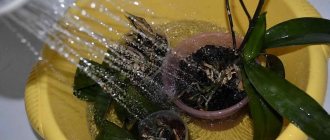How do streptocarpus reproduce?
How can you propagate streptocarpus at home? There are several options. Young seedlings can be grown from any part of the mother plant, just root it.
Germination of seeds
Indoor petunia - care and cultivation at home
Streptocarpus can be propagated from seeds at home without much effort. A short time after planting, they germinate and take root well. The only peculiarity is the lack of transfer of hybrid properties to young plants. Therefore, planting material must be purchased from trusted places.
Reproduction proceeds according to the following scheme:
- the pre-prepared soil is generously moistened with a spray bottle and sent to the greenhouse;
- the seed material is not buried, but scattered over the surface;
- containers are placed closer to the sun;
- the greenhouse is covered with a lid;
- ventilate daily for 15 minutes.
Important! With proper care, the first shoots should be expected within 2 weeks
Rooting cuttings, leaves, leaf fragments
Streptocarpus can be propagated by dividing an adult bush with several rosettes. Each of them must have a growing point and a root system. After watering, the bush is removed from the container and divided into several parts. The sections are sprinkled with charcoal powder, and the resulting seedlings are planted in different containers. They are cared for according to the standard scheme.
When propagating streptocarpus from leaf fragments, you should take a middle-aged plate and cut it according to the scheme:
- across - into 2 parts;
- along - into 2 parts;
- the central vein is cut out.
The shares should be planted cut side down in mini-greenhouses. The first shoots will appear in 2 months, then they can be fed.
Leaf propagation
Botanical description of the flower
Streptocarpus at home
Streptocarpus belongs to the Gesneriaceae family. This large family includes about one hundred and thirty plant species. In its natural environment, this flower can be found in Asian countries and on the African continent.
Streptocarpus has the appearance of either a shrubby or herbaceous plant. In addition, it is a perennial and an annual, it all depends on the type of plant. The leaves have a variegated color. The flowers rise above the leaves and can be collected in groups of two. The flowering period of the plant lasts from spring until autumn. In winter, the flower goes into a dormant period, maintaining its foliage.
Problems and their solutions
With proper care, growing streptocarpus does not cause much trouble. But if you regularly violate agricultural standards, problems may arise with the plant. Flower growers often encounter the following negative aspects:
- The leaves of the plant wither. This phenomenon is caused by insufficient watering. To correct the situation, moisten the soil and do not allow it to dry out in the future.
- The leaves are turning yellow. This is how the plant reacts to a lack of nutrients in the substrate. Feed streptocarpus and its leaves will restore their natural color.
- The tips of the leaves dry out. This phenomenon is caused by insufficient humidity in the room. To remedy the situation, place a humidifier or at least containers of water next to the pot. And also regularly spray the air around the plant with warm water from a spray bottle, trying not to get moisture on the leaves.
- The leaves were covered with a rusty coating. This phenomenon is caused by excessive watering or excess nutrients in the substrate. If the problem arose due to waterlogging, first let the soil dry completely, and then normalize the irrigation schedule. Please note that streptocarpus tolerates drought more easily than dampness. If rust on the leaves appears due to overfeeding, then replant the flower in a peat-based substrate. In the future, fertilize streptocarpus once every two weeks. In this case, use only half the dosage indicated on the package.
- The plant does not bloom. Streptocarpus may not produce buds due to a cramped pot or lack of light. Replant the plant or place it closer to a window and it will produce new flower stalks. But if the plant is old, then it will be impossible to get buds from it, because each leaf of the crop produces no more than 10 flowers. In this case, do not rush to throw away the streptocarpus. It can be updated, for example, by dividing the bush or leaf propagation.
Listen to these tips and secrets, and growing and caring for streptocarpus will not cause you much trouble.
Diseases and their treatment
Streptocarpus propagation takes place in a greenhouse, which is necessary to create optimal conditions for germination. But this can provoke the proliferation of harmful bacteria, which destroy the plant already at the cutting stage. Streptocarpus is susceptible to fungal diseases if not properly cared for - powdery mildew, gray rot. You should also protect the plant from spider mites, whiteflies and thrips.
Thrips . The first sign that the plant is sick is that its leaves begin to dry quickly. It is very difficult to stop this process. Treatment: application of insecticide. For faster treatment, increase the humidity and reduce the temperature in the room.- Spider mite . The name speaks for itself; when the disease occurs, cobwebs appear on the leaves and the flower stalks dry out. The control method is the same as for thrips.
- Late blight or virus . Symptoms of the disease are the presence of dark mosaic spots. This disease cannot be treated, so the only thing that can be done is to throw out the diseased plant.
- Powdery mildew. The disease manifests itself in the formation of white dust or flour on the plant. Control measures:
- removal of affected parts;
- replacing topsoil;
- treatment of plants and soil with antifungal agents.
- Gray rot . The disease manifests itself in the formation of brown spots on stems and leaves. Treatment consists of removing the affected parts and treating the plant and soil with fungicides. When fighting a fungus, it is imperative to reconsider the conditions for keeping streptocarpus. To prevent diseases, you can spray the cuttings with bactericides once a week.
You can learn about common diseases and pests of streptocarpus, methods of treating them, and also see photos of plants here.
Streptocarpus is about 130 wild varieties and more than a thousand luxuriously flowering, decorative varieties bred by breeders.
Reproduction of streptocarpus is a long and complex process. It is necessary to choose the right method of reproduction. Cuttings are a more reliable method of propagation, and with the seed method you can get unpredictable colors. By observing all the rules and growing conditions, you can achieve the appearance of this beautifully flowering plant in your home.
Possible problems in growing streptocarpus
The main problematic and weak points of the crop are diseases of the leaf blades and attacks of parasitic insects. Most pathologies are associated with violations of agricultural technology rules:
- The leaves are turning pale. Blanching is recorded when there is insufficient supply of nutrients or excessive growth of the bush. The best solution to the problem is replanting and adding a special nutrient mixture.
- The tips of the leaves dry out. Drying occurs when the air is too dry or the container is cramped. The tips of the plates will stop drying after transferring the bush to a new container and normalizing the humidity in the room.
- Leaves fall. The destructive heat causes lethargy and loss of leaves. The culture needs to be moved to a cooler room with diffused lighting. Remove damaged plates.
Pests
The appearance of thrips, aphids, spider mites and scale insects is associated with increased dryness of indoor air. If parasitic insects are detected, it is necessary to increase the humidity and treat with insecticides. Experienced flower growers prefer to use Fitoverm. It can be used to destroy various types of parasites. The solution is considered less toxic than similar drugs.
Important! It is necessary to spray not only the green part of the bushes, but also the substrate in the pot, since many insects like to hide in it. Thrips infestation
Thrips infestation
Other problems
The tropical origin of the crop requires its own characteristics: it needs light and airy soil, sufficient drainage and the absence of stagnant water. With constant overwatering, the root system of the bush will begin to rot, and it will stop throwing out babies and forming buds.
Domestic specimens are often affected by a variety of fungal infections. The list includes rust, rot and powdery mildew. Pathology develops due to improper supervision: constant stagnation of fluid or temperature disturbances. To avoid active propagation of diseases, it is necessary to carry out regular inspections of the plant and promptly spray the affected bushes with fungicidal solutions. Before irrigation, all damaged areas are removed.
Streptocarpus is famous for its unpretentiousness, but leaving it on the windowsill and occasionally watering it will not work. It requires a certain temperature, humidity, fertilizing and diffused lighting with maximum daylight hours.
Landing
The ideal time for sowing streptocarpus for seedlings is considered to be the end of January - beginning of February. This process is painstaking and cannot be rushed. Small bowls are prepared for future seedlings, with drainage at the bottom. Soil or a prepared substrate is poured onto the drainage layer, then the soil is moistened.
Seeds are planted superficially in the soil; they are not covered with soil on top or deepened into it, although sometimes they are sprayed from above with a fine spray. After planting, the container is covered with plastic film or glass on top to ensure a greenhouse effect. The bowl is removed to a warm place where the temperature is approximately +21-24 degrees.
During the entire period of their germination, it is necessary to regularly remove glass or film from the container to ventilate the seedlings. Do not place the container in a dark place, as this can increase germination time and cause the sprouts to reach up in search of the sun. As a result, they will be elongated but weak. Watering at this time is carried out through a tray so as not to wash away the seeds and prevent them from rotting.
As for the stratification of perennials, its relevance should be looked at on the seed packages in the store. If it does not indicate that it is necessary to stratify streptocarpus, there is no point in this procedure. This will not affect germination, because even for perennials, the best and highest quality seeds are those that are planted immediately after ripening.
Reproduction of streptocarpus by leaf
Flower propagation is carried out in several ways. Rooting methods may seem complicated at first glance. In fact, they are light and almost identical.
Read more Why streptocarpus leaves dry (wither): photos, reasons and what to do
How to root a streptocarpus leaf in the ground
Rooting occurs after 14 days. Babies begin to appear after 1.5-2 months.
Rooting streptocarpus with a leaf is chosen by gardeners more often than other methods. If you carry out the process competently, the plant will certainly delight you with healthy offspring.
How to plant streptocarpus in the ground:
- Take a pot no larger than 100 ml in volume. A plastic cup with holes will do. It's better to use a glass. This will allow you to easily monitor the development of the root system.
- Fill ⅓ of the part with soil and make a hole.
- Disinfect the cut leaf with a solution to protect the plant from infections and fungal diseases.
- Deepen it 1.5-2 cm into the soil. Do not compact.
When the babies appear and grow up to 2 cm, you can transplant them into a separate container. It is recommended to keep them in a greenhouse, sometimes ventilating them.
This way the children will gradually get used to the room conditions. How to propagate streptocarpus from a leaf can be seen in the video:
How to root a streptocarpus leaf in water
The chances of propagating the plant in water are very low. It is more effective to use a fragment of a leaf with a central and lateral veins.
Reproduction in water is a long and painstaking procedure. If it is enough to cut off a small shoot of Saintpaulia, then with streptocarpus everything is more complicated.
Reproduction of streptocarpus in water:
- Cut a leaf 5 cm long or take a small cutting. Dust the cut with charcoal.
- Fill the glass halfway with water and place the streptocarpus in the water. Use the liquid boiled and cooled to room temperature. You can take rainwater.
- Periodically it is necessary to add water. Sometimes even children are formed.
When a good root system is formed, the plant should be transplanted into the ground.
A greenhouse is not needed for propagation in water.
Reproduction of streptocarpus with a leaf fragment
Propagation of Streptocarpus from leaves is very easy, in many ways easier than African violets and many other indoor plants. It happens quite quickly and abundantly.
If you follow these simple, step-by-step instructions, you'll have no problem getting more of your favorite varieties:
- Cut off the healthy part with scissors. It is better to use a species that is mature but not too old. Those plants that have many veins are the best for propagation. To root streptocarpus with a leaf fragment, a portion of 1.5-3 cm is sufficient.
- Remove the middle part - the large vein. If the leaf is large, trim some of the outer edges.
- Create a gap or furrow in the root medium into which the leaf area can be placed. Make sure the soil is very light and porous. It should be moist, but not soggy.
- Place the resulting fragment in a glass with soil to a depth of 6-10 mm. It is advisable to place it vertically, then the likelihood of rotting is small.
More details Streptocarpus: photos of flowers with names and descriptions, video
Be sure to label the pot with the name of the variety that will be propagated.
If streptocarpus is propagated from a leaf fragment, it may lose turgor immediately after transplantation. To do this, the pot must be placed in a greenhouse, and after 14 days the turgor will be restored.
How to root a fragment of a streptocarpus leaf
Reproduction is also carried out from fragments. To do this, you should choose a large sheet with a noticeable number of veins. The more there are, the more children there will be.
Rooting streptocarpus with a leaf fragment - step-by-step instructions:
- Disinfect the knife or blade. Cut the leaf, cut crosswise, removing the central vein. You will get 2 parts.
- Pour up to 2 cm of soil into a low bowl up to 30 mm high or a square pot.
- Make shallow grooves in the soil, place fragments in them and lightly sprinkle.
After 2 months, small babies will appear near the lateral veins. After another 60 days they will reach a length of 3-4 cm. Now they can be transplanted from the mother leaf.
The video will tell you about the propagation of streptocarpus with a fragment of a leaf:
Methods for propagating a flower, when is it best to do it
Flower growers rarely stop at just one plant in their home, especially if they like the flower. You shouldn’t blame them for this - after all, everyone wants to propagate beautiful flowers in large quantities, and therefore it’s useful to know how streptocarpus reproduce.
Reproduction by dividing the bush
The easiest and least labor-intensive method is dividing the bush. You can perform a similar procedure on a very overgrown flower. To do this, you need to water the substrate generously, carefully pull out the plant, holding it with your hand at the base of the stem, and remove the soil from the roots. Then you need to separate part of the rhizome with foliage. It is recommended to carry out this procedure using a sharp knife.
Important! The cuttings need to be left in the fresh air for some time to dry the cut areas. After drying, treat the sections with an antiseptic - coal dust
Then plant the new plants in pots and place them under a plastic bag, film or jar to create a slight greenhouse effect.
Streptocarpus flowers
Growing from seeds
Breeding streptocarpus from seeds at home is the most time-consuming and labor-intensive process. The seeds must be distributed evenly over the surface of the soil, sprayed with a spray bottle and covered with film. It is worth regularly ventilating the plantings, providing diffused light and a constant air temperature of 20 °C. It is better to use artificial lighting for sowing.
After 7-8 days it is worth removing the shelter. The first picking is made into a container larger than the previous one, so that the distance between the sprouts can be increased. The second is in individual pots. Transplantation can be done at any time of the year.
Cuttings
A healthy young leaf blade can serve as a good material for propagation of streptocarpus. To do this, the sheet is divided into several parts using a sharp blade. The cutting areas should be dried and then planted vertically in pots.
Rooting parts of the leaf in this way is quite simple; the use of growth stimulants is not required, but it is worth using fungicidal solutions to protect streptocarpus from diseases.
Important! The pots must be covered with glass or plastic wrap and placed in a well-lit, warm place
Propagation of streptocarpus by cuttings
How to care for this flower?
Let's look at how to properly care for a plant so that it grows and develops quickly.
Soil and fertilizers
The soil for the plant needs to be loose, air- and moisture-permeable. The substrate for violets is perfect. Add a little perlite or peat to it. When preparing your own soil mixture, you can use the following recipes:
- Deciduous soil, peat, sand (2:1:1).
- Peat, perlite, sphagnum moss - in equal parts.
- Deciduous humus, bark, peat, sand - in equal proportions.
Add a little crushed charcoal to the prepared substrate. Thanks to it, stagnation of water in the soil and rotting of the root system are prevented.
To grow streptocarpus, you can use a mixture of peat and vermiculite, taken in equal proportions. If you plant a plant in only one peat, then you need to take into account that watering should be frequent. Otherwise, the peat will turn into a monolithic dry piece.
Reference! Sterilize the purchased substrate or prepare it yourself before using it for planting. To do this, keep it in the oven for 15 minutes.
From spring to autumn, streptocarpus requires regular feeding. Perform them once every 7-10 days. Liquid complex formulations are suitable for flowering indoor plants. For this crop, you can alternate potassium and nitrogen products. Just reduce the dosage indicated on the package by 2 times. In winter, fertilizing is not required.
Regular application of fertilizer will allow you to achieve beautiful and abundant flowering.
Young plants that have recently been rooted should be fertilized with nitrogen compounds. When forming buds, mixtures with a predominance of potassium and phosphorus are used. You can buy ready-made fertilizers:
- New ideal.
- Violet.
- Super bloom.
- Kemira Suite.
Apply nutritional compounds only to moist soil, preferably after watering. This will avoid burning the roots of the plant.
Trimming
In order for the plant to produce as many flower stalks as possible, it is necessary to carry out regular pruning. To do this, remove the lower old leaves, as they take strength and nutrients from the flower.
Watering
To moisturize, use soft, settled or melt water. Its temperature should be room temperature. The plant tolerates a lack of moisture better than excess. So it is undesirable to flood streptocarpus, as this will kill it.
Moisturizing should be moderate. Perform the next watering only after the middle layer of soil in the pot has dried. The best option is to water from a tray or along the edge of the pot. Half an hour after moistening, remove the remaining liquid from the pan.
Important! When watering, make sure that water does not penetrate the leaves and flowers.
Humidity
To successfully grow a flower, it is necessary to maintain humidity in the region of 50-70%. To achieve this goal, place containers of water near the flower. Moistening the above-ground parts of the plant is strictly prohibited.
Temperature
Streptocarpus responds positively to heat. In summer, the optimal temperature remains 20-25 degrees. As the temperature rises, increase the air humidity proportionally: in winter, for ordinary plant varieties, the temperature will be 15-18 degrees, for hybrid varieties - 18-20 degrees
It is important not to allow the temperature to drop below 13 degrees, and for hybrids - 16 degrees
Drafts have a detrimental effect on a flower, so it is important to protect it from them. It is not recommended to take pots out into the open sky, as the plant feels comfortable in indoor conditions
Dividing a bush into parts when transplanting an adult plant
When the mother streptocarpus bush has grown too much and is already cramped in the pot, and thickened leaf rosettes cause a reduction in flowering, it is best to make several copies of new plants from your pet. To do this, remove the bush from the pot, carefully free its roots from the soil and cut the plant bush along with the root system of the flower into two or three parts with a sharp, clean tool (knife, blade). Make sure that each part has not only roots, but also leaves with a growing point. Sometimes five new young flowers are obtained from one overgrown bush at once. Treat each cut part with crushed charcoal or activated carbon. Prepare pots that are not deep, but spacious. Place 1 cm of expanded clay on the bottom. There is the same amount of land on it. Use the soil for decorative flowering indoor plants. Plant new bushes in pots up to the root collar, try to ensure that the soil fills all the voids in the pot and covers all the roots. Water the seedlings carefully along the walls of the pot with settled warm water. Place them in a bright place prepared for them (but not in the sun) under a film. The bushes quickly take root and soon begin to bloom.
Transplantation of streptocarpus
After a month or a month and a half, when the children feel cramped in small cups, I transfer them into plastic pots no more than 8-9 cm in diameter. This volume is enough for first-year plants. The soil for adult specimens should be rich in organic matter, but always light, loose and airy. After about 4-6 months from the moment of planting a fragment of a leaf, you can rejoice at the first flowers - this is a worthy reward for work, diligence and patience.
It is often recommended to dry the cuttings for several minutes before planting. But I didn’t notice any difference between dried and undried cuttings, so I plant them immediately, deepening them a centimeter. Since the soil in the containers is moist, I don’t water it after planting, but I spray the cuttings from a spray bottle with Isar or Epin solution.
After this, I sign the names of the varieties and the date of planting, close the container with a lid and place it in a bright, warm place. It’s good if there is a shelving unit with lighting. If not, no problem, a window sill will do, provided that the container is not exposed to direct sunlight, otherwise the cuttings will simply “cook” in it.
Related link: Plant propagation Part 1 Part 2 and Part 3
Why Streptocarpus does not bloom: diseases, problems and pests
Spider mite on streptocarpus
A plant may not bloom for the following reasons:
- A variety is grown that simply does not flower in the cold season.
- The age at which the plant is just beginning to gain strength.
- Streptocarpus will not bloom if it is not properly cared for. Improper watering, fertilizing and replanting can cause the buds to not bloom.
To avoid such problems, it is necessary to properly care for the flower, as well as remove damaged areas and treat the bush with fungicides.
Pests can be dangerous to a flower only if it is not properly cared for. The most dangerous are thrips, spider mites and aphids. To combat them, it is enough to regularly treat the bush with insecticides.
Important! Uninfected plants growing next to a sick individual must be treated for preventive purposes. Streptocarpus will be an excellent option for an ornamental plant for growing at home.
The most common varieties, such as Crocus and others like it, will create a feeling of coziness and comfort at home
Streptocarpus will be an excellent option for an ornamental plant for growing at home. The most common varieties, such as Crocus and others like it, will create a feeling of coziness and comfort at home.
Streptocarpus diseases and treatment methods
Streptocarpus, like most other plants, are susceptible to various diseases, which not only affect their appearance, but can also lead to death
Diseases are usually easy to diagnose by noticing how the flower looks. In order to understand whether streps is sick, you can compare your home flower with photographs of plants affected by a particular disease
Doesn't bloom
If a flower looks healthy, but does not bloom, first of all you need to pay attention to the correctness of its maintenance. The plant does not bloom in cases where it does not have enough light or the ground is too wet
If a lack of light can be dealt with quickly by simply moving the pot to a new place, then an excess of moisture can lead to serious consequences.
If streptocarpus does not bloom precisely because of an excess of moisture, then it must be transplanted into new soil, making sure to cut off all rotten areas. Another reason for the lack of flower stalks is the lack of nutrients in the soil. Adding mineral fertilizers will correct the situation.
Powdery mildew
Powdery mildew is the consequence of improper flower maintenance. Excessive watering or inappropriate air temperature can cause the disease. A thin white coating appears on the leaves, under which wounds and sores may appear over time.
In order to rid the flower of the disease, it is necessary to cut off all the affected leaves and replace the top layer of soil in the container.
Streptocarpus is also dusted with wood ash and watered with a disinfecting solution of potassium permanganate for several weeks. In addition, it is necessary to treat the soil with Topaz or Baktofit. In most cases, streps respond well to treatment and quickly regain their strength.
Gray rot
Gray mold is a fungal disease that affects both the above-ground part of strep and its roots. The cause of the disease is improper watering of the plant and high room temperature. The disease manifests itself in the form of brown spots covered with a gray coating over the entire surface of the flower. Treatment includes removing the affected parts, treating the sections with an antiseptic, rinsing under running water and treating the strep and soil with Trichodermin.
Further, for treatment, it is enough to adhere to the watering regime and temperature.
Rot of roots, stems and petioles
Brown spots appear on streps affected by this type of disease, the petioles darken, and the leaves lose turgor. If rot appears, it is necessary to remove the damaged areas, treat the cuts with an antiseptic (for example, activated carbon), arrange watering (water as the top layer dries), provide the streptocarpus with enough light (but protect it from the scorching rays of the sun), treat the flower with Pseudobacterin, and water the soil with Fundazol.
Rot
Change in appearance, reasons
Under the influence of certain unfavorable reasons, the appearance of the plant changes. Insufficient lighting leads to a lack of flowering, and excess moisture affects not only the ability to bloom, but also the health of the foliage. A flower that arrives in conditions of constant humidity is susceptible to various fungal diseases, which cause significant harm to its appearance.
Streps can stop growing, become lethargic, and leaves lose their elasticity if there is insufficient watering.
Keeping streptocarpus in a hot room with stagnant air will cause it to dry out, and the peduncles and leaves will be the first to suffer. And direct sunlight on the flower can cause burns.
The appearance of “rust” on the leaves indicates excessive watering or exceeding the norm of nitrogen-containing fertilizers. The infected parts of the plant are removed, the flower is treated with fungicides in two stages when the first signs of the disease are detected and after 14 days.
It will also be interesting: Anthurium does not bloom - why and what to do at home?
Streptocarpus description and features
There are more than 130 species of this amazing flower in the world. In addition, there are also decorative hybrid varieties. However, they are all characterized by the following appearance features: Perennial plants without stems. They are grown exclusively at home; plants do not take root outdoors due to the harsh Russian climate. The seed pod, when ripe, has a spiral shape. Thanks to this nuance, the flower got its name (from the ancient Greek “streptocarpus” - “curved box”). The leaves are long and converge at the base into a small rosette. In some varieties, the leaves reach 30 cm with wavy or smooth edges. They are variegated, bright emerald, pale green. The volume of greenery also varies: some varieties boast many leaves, others have only one. Flowers are obtained as regular, semi-double and double. Their diameter also depends on the variety - they can grow from 2 to 9 cm. If the flowers are very small, many of them grow on the peduncle. And there is only one “giant flower” on the peduncle. The colors of streptocarpus are amazing. They can be anything: all shades of red/blue/purple, yellow, white. And single hybrids are even painted in two or three different colors.
Latest articles for gardeners, gardeners and flower growers
Pruning cherries in the fall for beginners in pictures step by step What to plant after tomatoes next year What to plant after strawberries in the fall Planting garlic in the fall before winter in Siberia
In its beauty, streptocarpus is not inferior to the magnificent Saintpaulia (Uzambara violet), and some varieties even surpass it in their grace. At the same time, caring for streptocarpus is much easier than caring for violet.
So, it is not capricious when ripening and does not lose leaves at the slightest change in weather. At the same time, plants with miniature flowers are ideal for summer residents with a limited area for planting. But if in America this unique plant has already become widespread, in our country it is just taking root.
Types and varieties
Today, in most cases, only professional gardeners can boast of non-hybrid species, which, by the way, are more difficult to grow than hybrid ones. They are always more whimsical to environmental conditions and react to the slightest deviation in ambient air humidity, temperature, drafts or watering intensity. Only a competent gardener will be able to constantly maintain a fine line without violating it, so that the flower remains in excellent condition for a long time and gives beauty to others.
Species found in the wild include:
Rocky. This variety is distinguished by a woody, strong base, medium-sized purple inflorescences and oval leaves.
When growing this species, it is important to especially carefully maintain humidity and temperature within acceptable limits. By the way, very often the rock species is confused with the false African violet due to its great similarity. Wendlanda
Original variety. Its differences: one, but very large leaf, green at the end and purple at the base. It is crowned with a loose cluster of several purple flowers. Wendlanda dies immediately after flowering and reproduces only by seed. Stem-forming. This variety is distinguished by the fact that it reaches a height of 40-60 centimeters. At the top of the rosette, small drooping inflorescences of a soft blue color most often bloom. Pick. Small shoots 10-15 centimeters long are crowned with miniature clusters of umbrella-shaped flowers. The petals are characterized by a predominant lilac hue. Royal. The ancestor of all domestic specimens, first appearing in Europe in the 19th century. The traditional soft red hue of the inflorescences and medium-sized leaves, not exceeding 25 centimeters, are its main differences. The creation of many hybrid samples began with him.
In fact, today it is much easier to grow hybrid forms. They are less demanding to care for, and in beauty they are in no way inferior to the best wild specimens. Among the most famous are the following:
Fashion statement
Famous for its beautiful and large flowers. The petals are predominantly white, acquiring dark blue veins closer to the base, turning into a solid purple hue at the stem.
Texas Hot Chili
Small in size and slow growing variety. This streptocarpus is crowned with very beautiful bright red flowers with a yellow base.
Description of the plant
Streptocarpus is an annual or perennial shrub that grows in the tropical forests of Africa and East Asia. The plant does not tolerate shade at all. Considering the fact that mainly hybrids are grown on window sills, the seed propagation method will not allow the sprouts to inherit the properties of the mother plant. However, among other propagation methods it is considered the most effective.
Streptocarpus is also unique in that it can be made to bloom almost all year round. To do this, artificial conditions for comfortable growth and development are created for him. The ornamental plant has about 130 varieties, which, depending on the type, may differ in appearance and growing conditions. For example, among them there are herbaceous varieties and plants that feel comfortable in a dry climate.
The flowers also differ, which can be simple, semi-double or densely double. Their color can be very diverse; you can grow not only one-color, but also two-color streptocarpus with different types of color. For example, it could be a pale blue flower with dark blue stripes on the lower petals, or a double specimen with a pink top and a milky yellow bottom.
The shape of the petals also differs: depending on the type, it can be pronounced, divided into 5 petals, or terry-corrugated, where the petals seem to be something single, cut along the edges.
Streptocarpus - description, belonging to the family
The Streptocarpus flower was first discovered in 1818 in the mountains of South Africa. Its name is a combination of two Greek words: streptos - curled and karpos - fruit. The bush was named so for a reason. The fact is that its seeds during the ripening period have the shape of a box. It is characterized by large leaf blades and long peduncles on which buds of a blue or purple hue are located.
Streptocarpus (appearance)
Additional Information! Streptocarpus is native to the Cape Province of South Africa. Therefore, it is often called Cape primrose.
Currently, almost 150 species of wild Cape primrose are known. Some of them grow on rocky surfaces, others on trees. Depending on the variety, flowers can grow in the shade or in sunny meadows. They can be either annuals or perennials. But they all have one thing in common - they belong to the Gesneriev family.
Domestic varieties are usually not large in size - they rarely reach a height of more than 40 cm, and peduncles grow no more than 25 cm. The leaves of the flower are quite large - 30 cm in length and up to 7 cm in width.
Blooming buds, in addition to the standard colors, can have different shades:
- red,
- purple,
- pink,
- yellow,
- black,
- with stripes,
- speckled,
- with patterns.
This is interesting! Another distinctive feature of Streptocarpus is the fruit, which has a spiral shape.
Reproduction using the "toaster" method
Sometimes, to propagate streptocarpus from a leaf, the so-called “toaster” method is used. It consists in removing the central vein from a healthy leaf 4–5 cm long. Both halves of the leaf are dried a little, then the cuts are treated with root formation stimulants and placed in a pot with a light earthen mixture, not deep, about half a cm. This is very similar to two pieces of bread in a toaster. Cover the planting with film. In the greenhouse, soon nodules with leaves will begin to appear along the cuts - the so-called babies, which you will plant from the mother leaf into separate pots as soon as they grow a little. This will happen in three to four months. Soon such bushes may bloom.
When to plant and what conditions are needed for this?
Before planting, it is worth considering some conditions:
The room for the flower is chosen to be cool
The temperature should be about +12..+14 degrees. The air should have high humidity. Lighting is required diffused. An important factor is the correct selection of container for the flower. It is also important to know what soil mixture is needed.. When should you plant? Planting is done in summer
It is best to do this in June, then you can be sure that the cyclamen will bloom in the fall. If planted in August, flowers will appear in late autumn or winter.
When should you plant? The plant is planted in the summer. It is best to do this in June, then you can be sure that the cyclamen will bloom in the fall. If planted in August, flowers will appear in late autumn or winter.
Preparation: soil and pot
Priming. For planting, you will need a nutritious and light substrate that will allow air and moisture to pass through well. The mixture is prepared from equal portions of leaf soil, sand, humus and peat
You can also buy ready-made soil for cyclamens. Important! The acidity level should not exceed 5.5-6.5 pH.
Pot. The plant does not feel comfortable in large containers
A suitable size would be a pot of 10-14 centimeters. If you take less container, the cyclamen will bloom weakly and ahead of time. A large pot will lead to rotting of the roots. There must be a hole of about 1-2 centimeters at the base of the container. It is necessary for the smooth passage of water.
Seeds
- Before planting seeds, they must be kept in a weak solution of potassium permanganate for 12 hours.
- In the previously prepared soil you need to make a 10 mm groove, which is then watered generously.
- The distance at which the seeds are placed should be 2-3 centimeters. Next they are covered with earth.
- After the seeds have been planted, they are covered with polyethylene or glass.
- When the first shoots appear, you need to remove the film or glass.
- Now the sprouts are moved to a well-lit place and positioned so that direct sunlight does not fall on the flower.
- When several leaves form on the seedlings, they are planted in pots of 2-3 pieces.
- During transplantation, the tubers must be completely covered with soil.
- After 5-6 months, the cyclamen is planted in a larger pot.
From the video you will learn how to sow Cyclamen seeds:
Tubers
- First, the bulb is removed from the soil and dried.
- Then it is cut with a knife, and at least one bud and a couple of roots must be left for each part.
- Next, leave it in a dark place so that the cut can dry.
- The cut must be sprinkled with wood or crushed activated carbon. This will help cope with diseases and germs.
- The pot definitely needs drainage; expanded clay is suitable as drainage.
- After planting the tuber, the pot should be removed from direct rays.
Features of care
The appearance of the plant is more elegant than many indoor flowers; in its beauty it can even be compared with violets. But unlike them, caring for streptocarpus is much simpler. A flower can feel comfortable both on the windowsill and in the room on the table; it does not matter to it what kind of light predominates in your house: natural or artificial. If you still want to purchase streptocarpus, then we suggest that you familiarize yourself with the rules for keeping this wonderful flower in an apartment.
Location and lighting
Streptocarpus on the windowsill
This flower, despite its simplicity of maintenance, still has its own preferences. For full development, it needs diffused light at least 12 hours a day, this especially applies to the flowering period. If your flower is quite large, then you can put it in a bright place in the kitchen or in the living room on a table, you can even leave it in the hallway if it is well lit.
If you have several small representatives of streptocarpus, then you can safely put them together on one windowsill. Give preference to windows that face west or east.
It is advisable not to leave the plant on the south window in the summer; it would be better to move it to the back of the room and put it on a table, it will be happy here. As you may have guessed, streptocarpus does not like direct scorching sunlight.
In winter, on the contrary, it is better to place the flower on the windowsill of a south window, here it will receive enough ultraviolet radiation. It is better not to look at the north side of the window at all; here the flower will suffer from a lack of natural light . If you still decide to leave it there, then it will need additional artificial lighting in the form of a phytolamp; it provides light that can replace natural light for a while.
Content temperature
The plant does not require any special temperature; it will be quite comfortable at 23 C. However, streptocarpus tolerates heat very poorly and can get sick and die. In particular, if the temperature exceeds 27 C for a long time, the flower begins to fade and its appearance becomes sluggish. In this case, you need to immediately return to normal room temperature, only in this case there is hope that the flower will come back to life. After this, it is advisable to carefully cut off the diseased leaves.
In warm weather, it is not prohibited to frequently ventilate the room where streptocarpus grows, but under no circumstances leave a draft . Many people believe that in the warm season the plant can be placed on the balcony or veranda. This opinion is wrong; it will be more comfortable for streptocarpus to stay in one place and not experience temperature changes.
In winter, the flower should be kept at a lower temperature, however, if the thermometer drops below 13 C, there is a risk of disease, so do not treat this carelessly.
Humidity and watering
Watering streptocarpus
The humidity in the room should be in the range of 55% -75%, these are the most optimal numbers. At low humidity, you can use a spray bottle, but you cannot spray the flower itself; it is better to simply humidify the air around the plant. A good option would be to place a small container of water next to the flower.
Streptocarpus should be watered abundantly all year round. You shouldn’t overwater the flower, but it won’t tolerate a long drought either. Before watering, make sure that the water is settled, soft or boiled; the water temperature should be room temperature. Streptocarpus cannot be watered with hard water.
When watering, try not to wet the leaves of the plant; the water should directly enter the soil. It is better to pour water into the pan of the pot.
Don't forget to drain excess water from the pan 20 minutes after watering. Otherwise, you can cause irreparable damage to the root system. She will simply rot. By the appearance of a flower, you can easily guess when it needs moisture: if the plant’s leaves slightly droop to the ground and wither, then water is needed. After watering, you will notice that the leaves have risen again and look healthy.
If you have been away from home for a long time and the flower has lost a large amount of moisture, you need to water it twice with an interval of two hours.
Feeding the flower
Fertilizer application
Streptocarpus, unlike other indoor plants, prefers fertilizers in large quantities, all year round. Its root system very intensively takes all the nutrients from the soil, when there is simply nothing left to take, the plant begins to hurt and wither. From the spring months you need to feed this flower every week. You can feed at the same time as watering by adding fertilizer to the water.
In spring, it is better to use nitrogenous fertilizers, since the flower must gain the necessary green mass. Regular fertilizers for indoor plants are suitable as fertilizers. During the flowering period of streptocarpus, you can add complex fertilizers for ornamental flowering plants. They contain large amounts of phosphorus and potassium, which promote active flowering of plants.
In winter, streptocarpus is usually not fed frequently; if the flower continues to bloom, then there is no need to stop fertilizing.
Pruning and soil
If you notice in the fall that the lower leaves of the plant begin to turn yellow and wither. Don't start panicking. This is a natural process. This means one thing: the flower begins to prepare for winter and sheds some of its leaves. You can help him with this by simply removing old peduncles and wilted leaves. After this, it will become much easier for streptocarpus to winter, thanks to this the plant will have the strength to form new leaves and flower stalks.
The most convenient way for this plant is to purchase ready-made soil that is suitable for violets. If you wish, you can add a little peat, it will only be better. Many gardeners prefer to prepare the soil themselves.
In this case you will need:
- humus,
- clay-turf soil,
- sand,
- peat.
A mixture of these components will give the soil breathability and looseness. Experienced flower growers recommend calcining the prepared soil in the oven, thus disinfecting the soil.
Capacity
It is better to choose a plastic container for the flower. It should be wide, but not deep. You need to know that the roots of streptocarpus do not go deep, so with each subsequent transplant the pot should be 3 cm wider than the previous one. Place expanded clay on the bottom, it will act as a drainage layer. Accordingly, drainage holes are also needed for watering.
Reproduction and planting at home
The process of planting and growing a crop requires compliance with the following conditions:
- Newly purchased young specimens should be replanted 2 weeks after purchase. To do this, use transparent containers. This will allow you to monitor the development of the root system in the future.
- For successful cultivation, plant the flower in shallow containers. This will ensure lush flowering and growth of green mass. The more growing points a plant has, the more flower stalks it will produce.
- Young specimens need to be cared for properly. First, such plants must grow green mass, and only then bloom. So it is recommended to cut off the resulting flower stalks.
- Properly selected temperature conditions, air humidity and systemic watering will allow you to grow and propagate a beautiful ornamental flowering crop.











